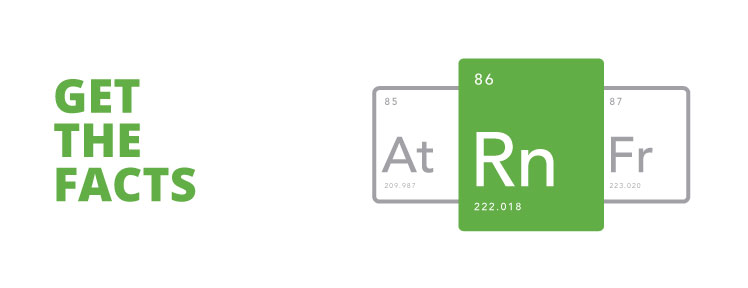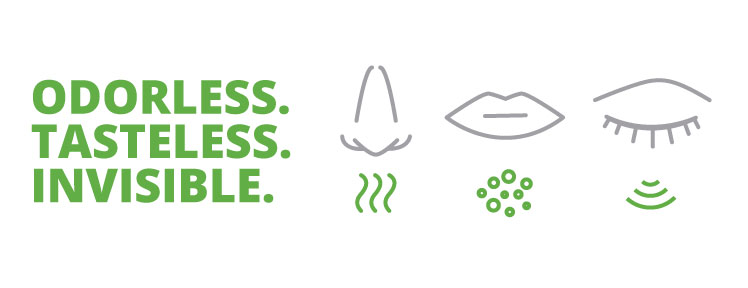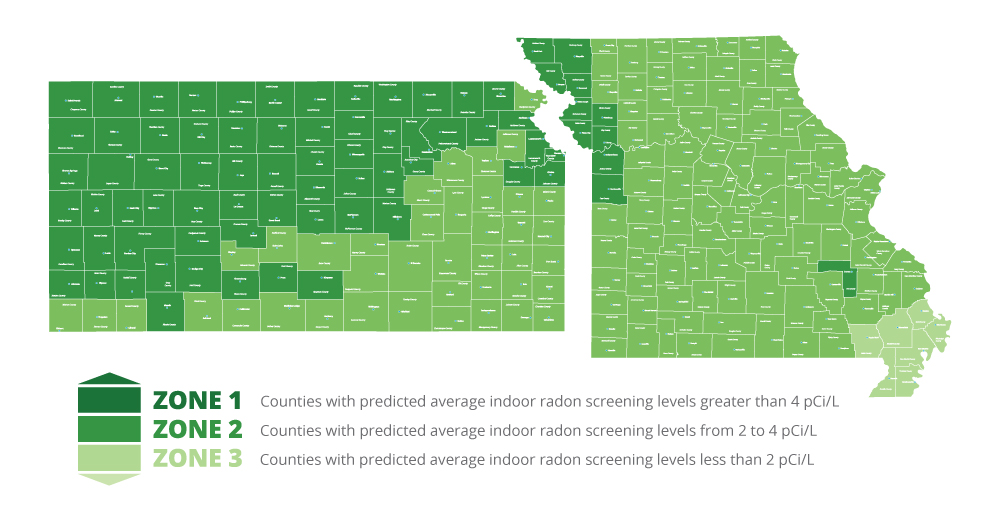Radon 101
Be Informed.
Do you know the facts about radon? Radon is a naturally-occurring gas that exists in every home and structure. Radon reaches unsafe levels in an average of 1 in 3 homes in the Kansas City region, across both Kansas and Missouri. The EPA deems levels at or above 4 pCi/L as a health risk.We believe in educating our customers and the community so they can make informed decisions to protect their families.
What is Radon?
Radon is a radioactive gas created when uranium in the earth’s rock, soil or water decays. Indoors, it is not naturally occurring, but a result of the way our homes, schools, and workplaces are designed, constructed, and maintained. Radon is one of the most significant environmental health risks that exists today.
Radon is cancer-causing radioactive gas that has no smell, is invisible to the naked eye and has no taste. It is considered one of the most life-threatening forms since it cannot be detected without proper testing. The Surgeon General and American Lung Association warn that radon gas has been proven the second-leading cause of lung cancer in the United States.
If you smoke and your home has high radon levels, you’re at higher risk for developing lung cancer. Some scientific studies of radon exposure indicate that children may be more sensitive to radon. This may be due to their higher respiration rate and their rapidly dividing cells, which may be more vulnerable to radiation damage.
Find more information from the Environmental Protection Agency / EPA and the American Lung Association.
Radon Map
This Radon map was created to assist National, State, and local organizations to better target internal resources as well as to implement building codes to address radon-resistance. This map is not intended to be used to determine if a home in a given zone should be tested for radon. Homes with elevated levels of radon have been found in all three zones. All homes should be tested regardless of geographic location.
Where Does Radon Come From?
Radon gas seeps into homes and structures from rock and soil beneath the foundation. It can be found in new construction and older homes and buildings. Certain areas of the region and country can produce higher levels based on the composition of the earth’s rock and soil in that area. You cannot detect radon with smell, taste, or sight, but it exists in EVERY home and structure. The only way to determine if radon levels are above the EPA’s Action Level of 4 pCi/L is to conduct a radon test.
Call 816.587.3500 or schedule your test online today.
Why Is It Dangerous?
Radon is a radioactive gas and Class A carcinogen. When exposed to high levels of radon, individuals are at risk for lung cancer, especially those who smoke, have lung disease or are children. The American Lung Association and U.S. Surgeon General classify radon exposure as the second-leading cause of lung cancer in the United States.
When you breathe in radon gas, particles settle in your lung tissue and begin to decay. As the radon particles decay, they release bursts of energy that damage the lung tissue cells. Over time, the cell damage can lead to the development of lung cancer. Scientists now estimate that between 15,000 – 22,000 deaths caused by lung cancer each year are related to radon in the United States.
Call 816.587.3500 or schedule your test online today.
How Do You Fix It?
The most cost-effective and successful method of remediation – or radon removal – is the active depressurization system (ADS). The ADS system draws air from under the slab or from under a radon polyethylene barrier (if there is no slab) and exhausts it to EPA’s standards through PVC pipe and a specially designed in-line fan. The exhaust of these systems can be installed on an outside wall or internally and exhausted through the roof. These systems are virtually maintenance free. A visual indicator is provided, allowing the homeowner to monitor performance.




